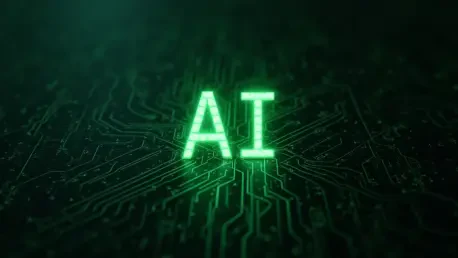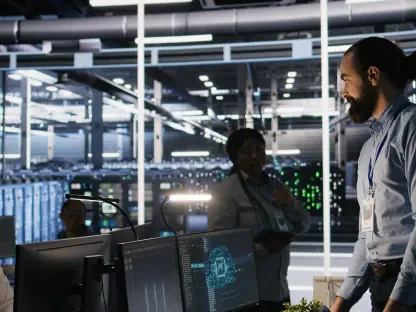In today’s rapidly evolving digital landscape, governments strive to update their legacy IT systems, yet face significant challenges due to budget constraints and regulatory uncertainties. To shed light on these pressing issues, I’ve invited Donald Gainsborough, a leading expert in policy and legislation and the visionary leader behind Government Curated. His insights today will unravel how state and local leaders can overcome current barriers to technological advancement.
What are the primary reasons state and local leaders are facing challenges in modernizing their legacy IT systems?
State and local leaders encounter challenges primarily due to budget constraints and uncertainty in federal funding. These systems are resource-intensive to update, especially when funds must be carefully allocated across various urgent needs. Moreover, every state must abide by a balanced budget amendment, which imposes further limitations on discretionary spending for such modernization efforts.
How has the cancellation of grants by the U.S. Department of Labor impacted states’ abilities to modernize their systems?
The cancellation of these grants is a significant setback. These funds were essential for states to update and maintain their unemployment systems, serving as partial alleviation for their financial constraints. Without these grants, states are more exposed to the volatility of their funding sources, forcing them to possibly divert money from other critical areas or postpone modernization projects indefinitely.
Can you elaborate on the findings of the EY survey regarding tech leaders’ priorities for cost reduction and cybersecurity?
The EY survey highlights that cost reduction and cybersecurity top the priority list for tech leaders, perceived as more immediately pressing compared to broader modernization efforts. This prioritization reflects a pragmatic approach focused on safeguarding existing systems and managing expenses, especially in a climate of financial uncertainty and increased digital threats.
Why is modernization given a lower priority by tech leaders compared to cost reduction and cybersecurity, according to the survey?
Modernization often requires substantial upfront investments and offers long-term benefits, which can be difficult to justify when immediate threats and economic pressures demand attention. Cost reduction and cybersecurity provide direct, tangible benefits in protecting and stabilizing existing operations, making them more appealing under tight budgets and increasing cyber threats.
How has the use of AI and generative AI changed in state and local agencies over the past five years?
There’s been significant growth in AI utilization—from 13% to 45% among agencies, with generative AI recently reaching adoption levels of 39%. This surge is driven by AI’s potential to automate processes, address labor shortages, and enhance decision-making capabilities, thereby encouraging agencies to integrate these technologies despite potential regulatory challenges.
What are the main concerns state and local IT leaders have regarding AI development and cyberattacks?
IT leaders express pressing concerns about the lack of robust government regulations or standards for AI, which complicates its safe deployment. Furthermore, there’s a fear that as AI becomes more sophisticated, cyberattacks will similarly evolve, posing heightened risks to already vulnerable public sector systems.
In what ways did the lack of clear government regulations or standards impact AI adoption among state and local agencies?
The absence of clear regulations leads to caution among agencies, as they fear the legal and ethical ramifications of unchecked AI use. This regulatory gap can slow down adoption rates, leaving agencies to develop disparate policies and practices, which could fragment effectiveness and scalability.
How do budget uncertainties related to federal funding affect state and local governments’ abilities to modernize their IT systems?
These uncertainties impede strategic planning and project initiation. When federal fund inflows are unpredictable, states find it difficult to commit to expansive projects, as they can’t guarantee sustained support to see these projects through. This leads to either a cautious approach or a complete halting of modernization efforts.
What is meant by “currentization” in the context of legacy technology, and how does it differ from modernization?
“Currentization” focuses on extending the life of existing technologies without profound changes, essentially maintaining and optimizing them to remain functional. It contrasts with modernization, which involves overhauling systems to leverage new technologies. Currentization is a strategic stop-gap in the absence of adequate funding for full-scale modernization.
How do states balance their budgets when prioritizing IT modernization projects amidst funding issues?
States must evaluate the potential impact and necessity of each project, often foregoing less critical upgrades to focus on those which offer the greatest return on investment or are mandated by regulations. Prioritization involves rigorous risk assessment and strategic planning, and often compromises must be made due to budget constraints.
What role does AI play in addressing the deficit in state employees, and what tasks can AI help streamline?
AI helps fill staffing gaps by automating routine tasks, such as drafting communications and processing applications, freeing employees to focus on more complex, value-driven tasks. This not only maximizes current workforce potential but also allows agencies to operate more efficiently with limited human resources.
What opportunities do state leaders see in using AI for automation and improving back-office processes?
AI presents state leaders with opportunities to enhance efficiency, reduce errors, and streamline operations. They envision improved service delivery through tasks like accelerated data processing, enhanced decision-making capabilities, and overall quicker execution of back-office processes.
How might the passing of President Trump’s “One Big, Beautiful Bill” affect federal funding availability and budget planning for modernization?
Should this legislation pass, it could stabilize funding streams, offering states clearer financial forecasts and allowing them to plan and commit to modernization projects with greater confidence. The bill’s details will play a large role in how modern projects are prioritized and funded at the state level.
Can you discuss the implications of a financial “holding pattern” for states during periods of uncertainty with federal legislation?
During such periods, states often delay initiatives, consolidating resources and focusing on maintaining current systems. This “holding pattern” makes it challenging for states to engage in visionary reforms, rendering them reactive rather than proactive as they await financial clarity.
How do states manage the risks associated with data privacy and cybersecurity in relation to increasing AI adoption?
States implement rigorous security protocols and risk management strategies to protect sensitive data. They prioritize ongoing training and upskilling for employees to strengthen their cybersecurity posture while investing in advanced security technologies to safeguard against evolving threats.
Do you have any advice for our readers?
I encourage leaders to advocate for balanced, proactive policy-making that prioritizes both immediate IT needs and innovation opportunities. Engaging in collaborative discussions with stakeholders and community members can play a pivotal role in creating adaptive strategies that address both current and future challenges effectively.









